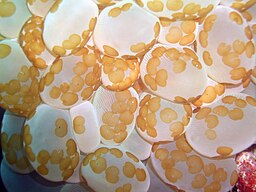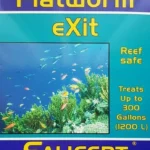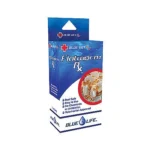Flatworms (and problems with them) are a very common topic for discussion among those of us who keep reef tanks.
Most of the time you will probably not be aware that you have them until they either get too numerous or begin to bother your corals.
Many are harmless and won’t bother anything but in sufficent numbers, they can become unsightly and will potentially smother corals and deprive them of light and food.
SPS corals can be particularly vulnerable to certain flatworms so if you keep those you will need a strategy to help you control them.

Table of Contents
Types of Flatworms in a Reef Tank
Flatworms invariably arrive in a reef tank as hitchhikers on coral frags or from any live rock added from another tank. Many are harmless and most will not bother anything unless they reproduce in such large numbers that they take over the tank.
The most common flatworm that is considered a problem in a reef tank is the Red Planaria. A small reddish-coloured flatworm that, if in small numbers, is not really a problem at all.
However, they rarely stay in small numbers and can reproduce wildly, covering every available space on the rock and sandbed and eventually smothering your corals.
Their population can go up and down so it’s possible that if you wait it out they may disappear without further intervention.
If you keep SPS corals you need to be on the lookout for Acropora-Eating Flatworms. These tiny flatworms can decimate an SPS coral colony in short order and are difficult to get rid of.
Treating any affected corals in an iodine dip seems to be the only solution but we have not tried this ourselves so proceed with caution.
Biological Control Of Flatworms
Flatworms are extremely sensitive to salinity changes so always dip any new coral frags in RO water for a few seconds. Shake the frag a few times in the RO water and any flatworms present should drop off.
There are a number of flatworm predators that you can also consider adding to your tank to help control the numbers.
There are never any 100% guarantees with natural predators but several different wrasses including the yellow wrasse, the six-line wrasse, and the melanurus wrasse have been known to eat flatworms.

The Yellow Coris Wrasse shown above is one of the most common of the wrasses that have been used to successfully control flatworms but it may come down to the personality of a particular fish or the type of flatworms you have.
They are fairly timed fish though, so don’t add if you have any large predatory fish or other more aggressive wrasses.

Another natural option to consider is a nudibranch. The Blue Velvet Nudibranch above eats flatworms and will undoubtedly clear your tank of them eventually. However, flatworms are all they eat so once all of your flatworms are gone the nudibranch will starve.
It may be possible for you to return the nudibranch to your LFS or pass it on to a fellow reefer but if this is not possible you may need to look for another option.
Chemical Control Of Flatworms
WARNING: TAKE EXTREME CAUTION WHEN CHEMICALLY TREATING FOR FLATWORMS.
Flatworms secrete a poison when they die off, which can and will kill both corals and fish if you do not take adequate precautions.
Both treatments listed below will kill flatworms but you must carefully follow the instructions given.
First, syphon out as many flatworms as possible before treatment. This is particularly important if you have a large infestation that is covering your sand bed.
Make sure you have new high-quality carbon available to add to your sump or canister filter as soon as the flatworms start to die off.
Have enough fresh saltwater ready for a 30% – 50% water change.
Closely follow the dosage instructions given.
If in doubt, syphon out some of the flatworms into a separate 10-litre bucket and add a few drops of the solution. Add just a couple of drops at a time until the flatworms begin to float and die off. This will help you determine the correct dose for the whole tank.
Chemical Control Products
From Salifert:-
 | Salifert Flatworm Exit | Check pricing on eBay >> |
WARNING: TAKE EXTREME CAUTION WHEN CHEMICALLY TREATING FOR FLATWORMS.
From Blue Life:-
 | Blue Life Flatworm RX | Check pricing on eBay >> |
WARNING: TAKE EXTREME CAUTION WHEN CHEMICALLY TREATING FOR FLATWORMS.
